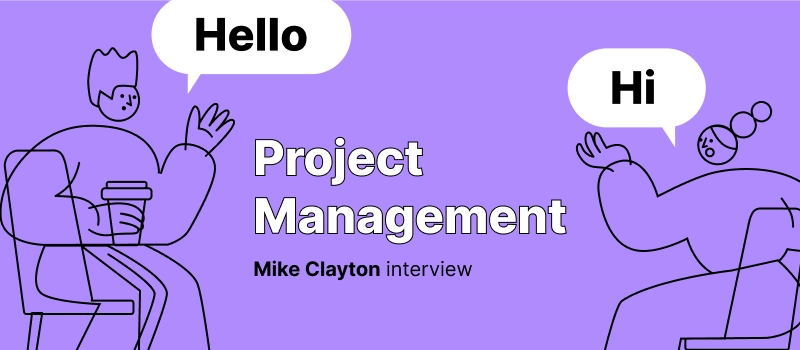
When managing a project, you may recognize that there are a lot of moving parts involved. You have multiple team members, research to conduct, idea-shaping, materials or resources required and more. It’s your responsibility to organize all of these parts and track project progress so they move together efficiently and keep things flowing along naturally. That way, everyone will have space to contribute quality work promptly.
Your project will involve stakeholders who are relying on your team to help them accomplish a targeted goal. As a result, you need to ensure you are on top of all parts of your project at once. This is challenging, but it is achievable.
These are recommended strategies to help you structure your project, lead your team, track project progress and ensure everything is completed properly and on time.

1. Break Your Project into Manageable Tasks
When you receive your client brief, you’ll have the outlining details to guide your project approach. With this information, you will define your project scope and the deliverables that it will entail.
Knowing what needs to be done to accomplish the project, you can break its process down into tasks. That way, there are multiple, achievable duties that you can designate to qualified team members. It can be daunting loading a massive, generalized assignment onto your members’ plates. They may not know where to begin and could become easily overwhelmed. Furthermore, if you leave your project assigned as large tasks, they may procrastinate or misjudge their timing.
So, keep your project progress organized by breaking it into as many achievable tasks as possible. Assign these across your team so they can complete them one by one. As they submit their completed work, you can determine whether they are falling behind, or if they are working at an efficient, productive pace.
By breaking your project into tasks, you can have team members working on parts of the project simultaneously, which will help move things along easier. More can be done at once rather than playing the waiting game, which would likely lead to project lag and dissatisfied stakeholders.
2. Status Reports
These are an effective way to have your team members notify you of their project progress. Set a day each week when your project team members submit a report with details of what they’ve completed and what they are currently working on. Knowing these details will allow you to understand how their timing suits the overall project timeline.
Status reports can be useful for updating your team on each other’s progress and informing stakeholders how everything is going. They can review the information and notify if something doesn’t suit their overall mission and needs to be omitted, or if something is missing to be added.
Here is what should be included in your project’s status reports from team members or for stakeholders:
- Statement of whether your team is on track, at risk or behind schedule
- A summary of progress
- List of major completed tasks, what is still to be done
- Details of any roadblocks or challenges
- Outstanding information to highlight
- Questions to stakeholders
3. Meetings
Frequent meetings are excellent opportunities to build a positive relationship with team members and review their current work on the project. Together, you can decide if anything is missing or needs to be omitted to satisfy the stakeholders. Furthermore, you can suggest any tweaks to what’s been completed so their work will blend into the final product. If you notice they may be veering off-course from the project’s original plan or target, remind them of the big picture. Restate what you need from them and clarify if there is any confusion on their end. That way, you won’t need to backtrack too close to the final deadline when everything is put together.
It’s easier to ask questions in personal interaction and learn fine details that a report template may overlook. During these meetings, you can offer your team members feedback that’s both positive and constructive for improvement, allow them to provide input on the project’s structure, and inform them if they have any concerns moving forward. These meetings are a chance to stay on top of what is being completed and proactive as you continue your project mission.
With these consultations, you can gauge the general productivity levels of your team. If you find they are all consistently falling behind, you may need to readjust the project’s roadmap so it’s more realistic. If some members are overwhelmed while others are underworked, you can redistribute tasks, so everyone contributes their fair share. That way, you will remain efficiently on track.
4. Establish Milestones and Deadlines
Give your project structure by implementing stages and specific deadlines within them. That way, everyone can understand what’s ahead and the timing expectations of their tasks. With these milestones and timelines created, you have an easy-to-follow project map that will lead you to the finish line if everyone manages to follow it.
Your milestones would be general stages, like your idea-shaping or brainstorming stage that would begin with your client briefing. You can offer a select chunk of time for your team to shape their approaches to achieve the project’s targeted goals. When you reach this stage, give specific dates or deadlines to submit outlines and drafts of their ideas for your approval.
Shape your milestones so they can only be passed with your approval. That way, you’ll know that your team is on the right path to your project’s success as you pass each major stage.
Your deadlines will be more specific dates within your milestones for pieces of the project to be submitted. This is a necessary precaution to keep your team on time with their progress. Deadlines are required, so tasks aren’t pushed too close to the end of a project stage and rushed. If duties are procrastinated, your team may create poor-quality products that could reflect negatively on your company.
5. Time Tracking
You can use data to monitor your project progress effectively. With time tracking, you can review your team’s logged hours on your project, so you understand how much time each task is taking to complete. With this information, you can foresee any potential delays or if everyone is meeting their deadlines.
Time tracking will help you monitor your team’s productivity levels and take any necessary actions if thighs are not looking on track. This could include motivating members to move more efficiently or investigating if they need extra assistance.
actiTIME for Project Progress Tracking
actiTIME is a helpful resource for project managers to track time and establish an efficient project flow, so everything is completed on time for your stakeholders. It’s a one-stop-shop where you can outline your project, the tasks you’ve broken it into, and list the milestones and deadlines.
With actiTIME, your project progress is made visible. This software will guide you and your team as you endeavor on your project together. Through this platform, you can assign tasks, monitor timesheets, share project resources, and more.
Lead your team to success as you produce a quality project on time for ultimate stakeholder satisfaction. Get started now by signing up for your free trial.

















































